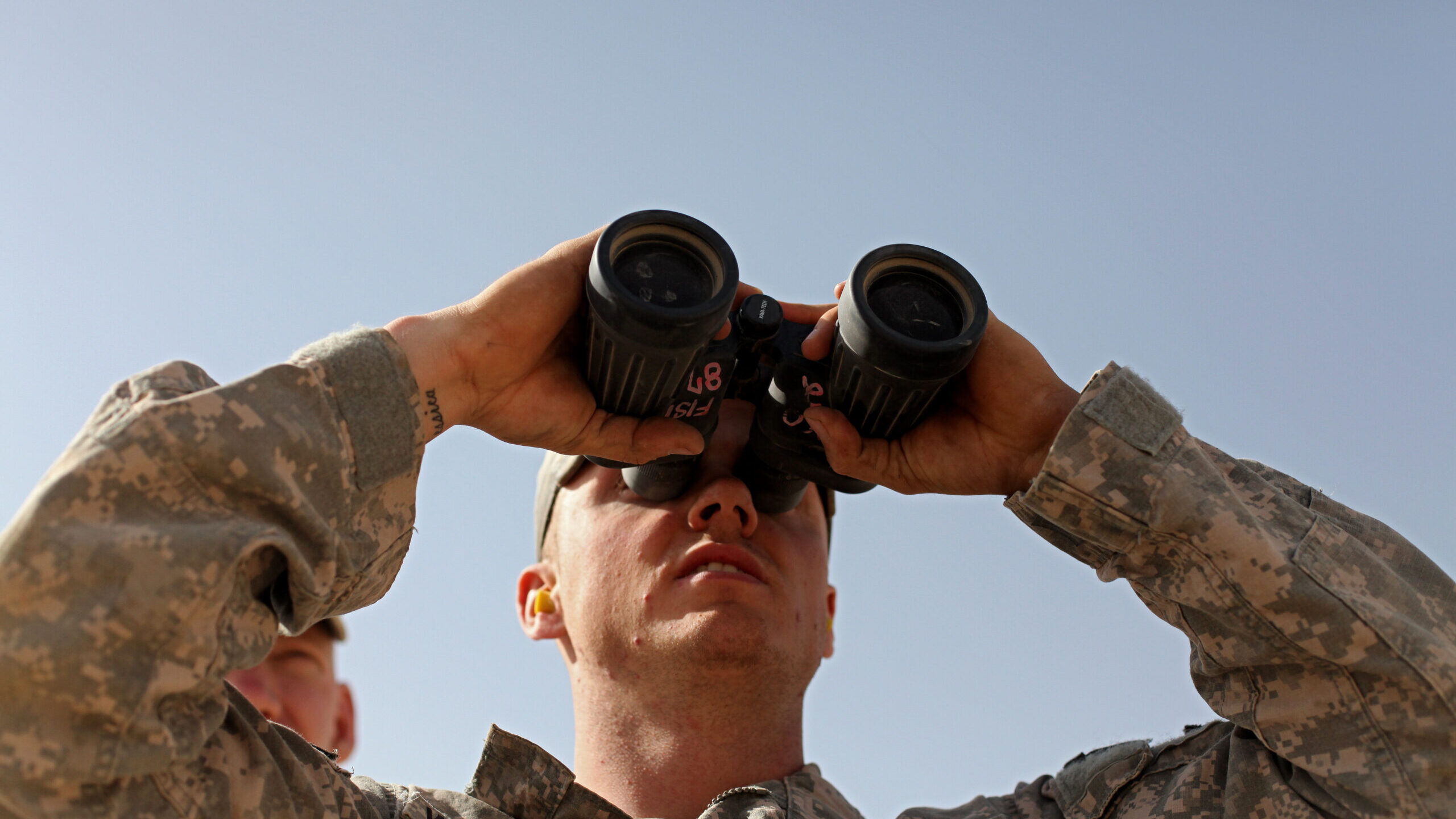
US Army Sgt. Dustin Waggoner, from Nashville, Tenn. spots a target with binoculars while another Soldier fires a .50 cal Barrett sniper rifle at a range in Forward Operation Airborne, Afghanistan, Aug. 27.
WASHINGTON — The Defense Department doesn’t appear to be buying China‘s story that the balloon floating 60,000 feet over the US is just a research weather balloon, Pentagon Press Secretary Pat Ryder suggested today.
In a statement this morning the Chinese Foreign Ministry acknowledged the balloon came from China but described it as “civilian airship used for research, mainly meteorological purposes” that had flown off course.
“The Chinese side regrets the unintended entry of the airship into US airspace due to force majeure,” the ministry said. “The Chinese side will continue communicating with the US side and properly handle this unexpected situation caused by force majeure.”
But as rare as semi-contrition from Beijing may be, hours later at a Pentagon press briefing, Ryder was dismissive of the innocent explanation.
“So first of all, we are aware of the PRC [People’s Republic of China] statement,” he said. “However, the fact is, we know that it’s a surveillance balloon. And I’m not going to be able to be more specific than that. We do know that the balloon has violated US airspace and international law, which is unacceptable.”
RELATED: US tops China but will need to use everything in cupboard, US Marine commandant says
On Thursday a senior official told reporters that the balloon’s suspected payload is not “revolutionary” but, like Ryder, declined to go into detail about what it could be carrying.
The Pentagon revealed the balloon as it floated over Montana Thursday, and Ryder said it has since continued its way eastward and is now “over the center of the continental US.” The North American Aerospace Defense Command (NORAD), “continues to monitor [the balloon] closely,” Ryder said.
Military assets had been mobilized to potentially shoot the balloon down, but Ryder said so far the decision has been made to let it float in part because “any potential debris field would be significant” and a threat to people on the ground.
He repeated that at 60,000 feet, the balloon is far above civilian air traffic, and said it does not pose a military or physical threat. Thursday the Pentagon said it had moved to shield sites from the “collection of sensitive information.”
If the decision is made to bring the balloon down, Tom Karako, a missile defense expert at the Center or Strategic and International Studies, said he suspects the US has a range of options to take it out “if we really want to.”
“We’ve got missiles that can reach there. There’s probably other things that are non-kinetic,” he said. “[At] the very least, we could be jamming the heck out of it.”
Beijing would hardly be alone in exploring the upper regions of the atmosphere for surveillance purposes. Last July the CEO of World View Enterprises, which makes stratospheric balloons for intelligence, surveillance and reconnaissance, told Breaking Defense his firm was “having discussions” with the US Army’s Pacific Command about its need for “operationalizing the stratosphere.”
The Army has also experimented with ultra-high-altitude unmanned drones for surveillance, like the spindly Zephyr made by Airbus. That craft set endurance flight records — partly because the Army couldn’t bring it down — before it apparently crash landed in August 2022.
And last month French military officials revealed that they, too, are looking to exploit the “higher airspace.” One French official explained that at some extreme heights engines have issues, “but today technology allows sensor-carrying balloons, for example, to use this space. Do we really want a balloon sent up by a hostile force sitting above Paris and watching our every move and be unable to deal with it?”
Breaking Defense’s Ashley Roque contributed to this report.






















